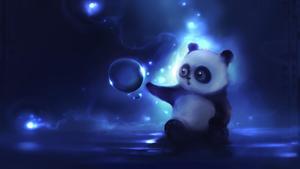14131186
Transport in humans
Descrição
Sem etiquetas
Mapa Mental por Shravani Chingre, atualizado more than 1 year ago
Mais
Menos

|
Criado por Shravani Chingre
mais de 6 anos atrás
|
|
Resumo de Recurso
Transport in humans
- Describe the circulatory
system
- a system of blood vessels with a pump
and valves to ensure one-way flow of blood
- a system of blood vessels with a pump
and valves to ensure one-way flow of blood
- Describe the double
circulation
- Mammals have a double circulatory system, which means
that: One circuit links the heart and lungs. The other circuit
links the heart with the rest of the body.blood is pumped
away from the heart into arteries and returns to the heart
in veins
- Mammals have a double circulatory system, which means
that: One circuit links the heart and lungs. The other circuit
links the heart with the rest of the body.blood is pumped
away from the heart into arteries and returns to the heart
in veins
- Explain the advantages of
a double circulation
- This type of system has advantages, including
higher blood pressure and so a greater flow of
blood to the tissues.
- This type of system has advantages, including
higher blood pressure and so a greater flow of
blood to the tissues.
- Name and identify the structures of the mammalian
heart, limited to the muscular wall, the septum, the
left and right ventricles and atria, one-way valves and
coronary arteries
- Describe the functioning of the heart
in terms of the contraction of
muscles of the atria and ventricles
and the action of the valves
- Left and right atria receive blood from
veins. Left and right ventricles pump
blood into arteries. The valves stop the
blood flowing backwards when the heart
relaxes
- Left and right atria receive blood from
veins. Left and right ventricles pump
blood into arteries. The valves stop the
blood flowing backwards when the heart
relaxes
- Name the main blood vessels to
and from the:
- Heart
- vena cava, aorta,
pulmonary artery and
pulmonary vein
- vena cava, aorta,
pulmonary artery and
pulmonary vein
- Lungs
- pulmonary artery
and pulmonary vein
- pulmonary artery
and pulmonary vein
- Kidney
- renal artery and
renal vein
- renal artery and
renal vein
- Heart
- Investigate and state the effect
of physical activity on pulse rate
- The pulse rate increases as an effect of
physical activity increases the rate at
which energy is needed from food
- The pulse rate increases as an effect of
physical activity increases the rate at
which energy is needed from food
- Explain the effect of physical
activity on the heart rate
- Your heart speeds up to pump extra
food and oxygen to the muscles.
Therefore your heart rate increases.
- Your heart speeds up to pump extra
food and oxygen to the muscles.
Therefore your heart rate increases.
- Describe the structure
and functions of arteries,
veins and capillaries
- Arteries
- Carry blood away
from heart at high
pressure.
- Carry blood away
from heart at high
pressure.
- Veins
- Return low pressure
blood to heart
- Return low pressure
blood to heart
- Capillaries
- Allow exchange of
materials between blood
and tissues
- Allow exchange of
materials between blood
and tissues
- Arteries
- Explain how the structures of
arteries, veins and capillaries are
adapted for their function
- Arteries
- Thick, elastic, muscular walls to
withstand pressure and to exert
force (pulse).
- Thick, elastic, muscular walls to
withstand pressure and to exert
force (pulse).
- Veins
- Large diameter to offer least
flow resistance. Valves to
prevent back flow.
- Large diameter to offer least
flow resistance. Valves to
prevent back flow.
- Capillaries
- Thin permeable
walls.
- Thin permeable
walls.
- Arteries
- State the functions of the
following components of
blood:
- red blood cells in transporting oxygen,
including the role hemoglobin.
- platelets in clotting (details are
not required)
- plasma in the transport of blood
cells, ions, soluble nutrients,
hormones and carbon dioxide
- red blood cells in transporting oxygen,
including the role hemoglobin.
Quer criar seus próprios Mapas Mentais gratuitos com a GoConqr? Saiba mais.
